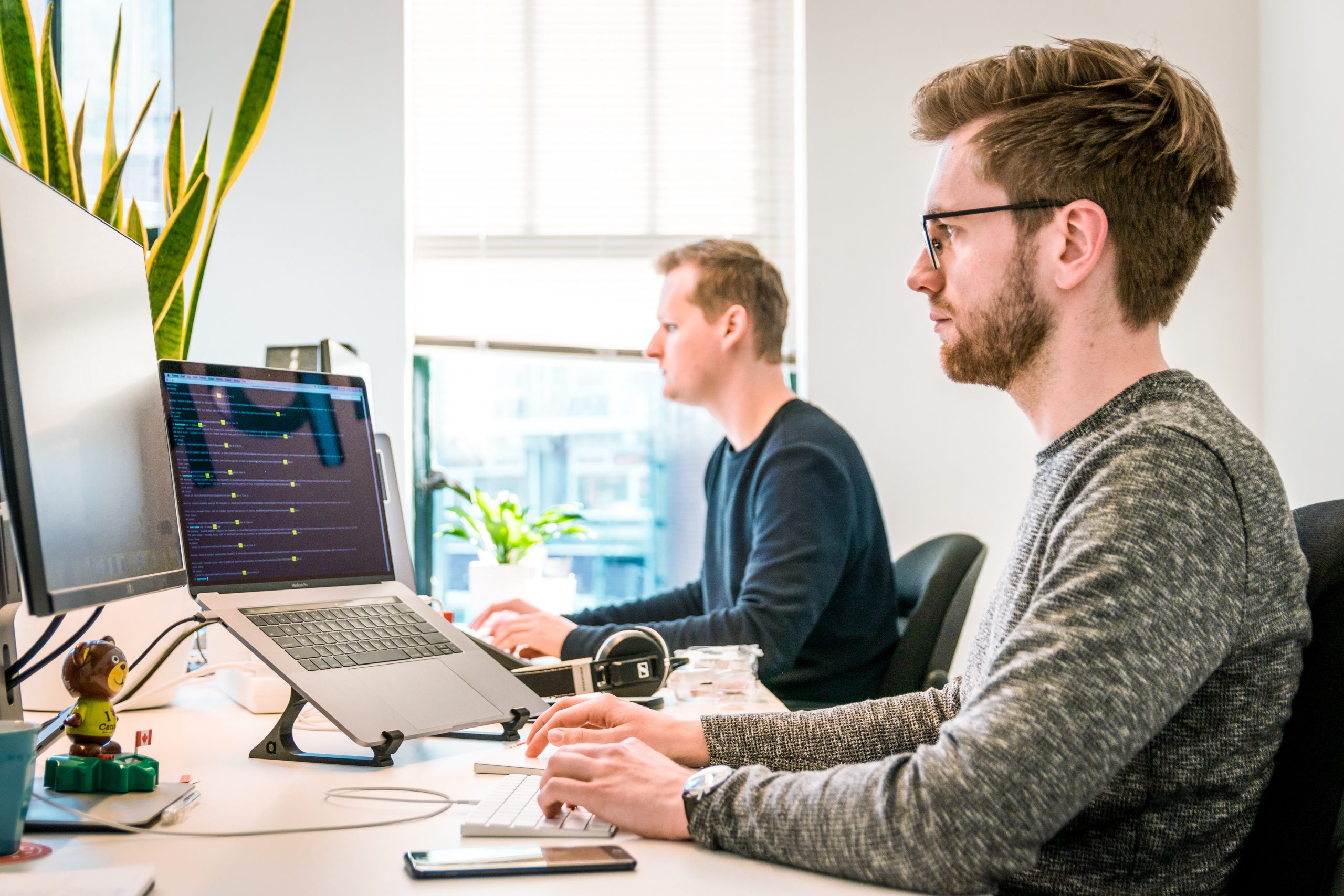
With the world slowly opening back up, we’ll likely be transitioning from a fully or mostly remote way of working to a more hybrid form. Even after being allowed to work on-location full time again, more people will continue working partially or fully remote than before the pandemic. So what does this mean for teams and organisations working on improving Customer Experience? We’ll discuss some common themes or actions related to CX and how to work most effectively when combining remote and onsite working into hybrid CX.
Customer Research
Firstly, an important part of anyone’s CX to-do list: customer research. Customer research comes in different forms and they are impacted differently by remote or hybrid working. It ideally consists of different types of both quantitative and qualitative research. As most quantitative research methods aren’t impacted as strongly by remote working, this article will focus on qualitative research methods.
In-depth interviewing
At Milkymap, we like to use in-depth interviews to better understand customers. In-depth interviews allow you to understand the ‘why’ behind certain choices, emotions and opinions, making them extremely valuable for CX.
Pre-covid, many in-depth interviews were planned in person. Meeting face-to-face has its clear advantages, like making it easier to focus for both interviewer and interviewee. But a clear downside of in-person interviewing is how time-consuming the process is. Usually, the interviewer, and occasionally also the interviewee, need to travel for an in-person interview. This time needs to be taken into consideration when deciding on the amount of time and amount of interviews you can realistically schedule.
An in-depth interview through a video conferencing tool like Zoom is much less time consuming, you can start interviewing almost immediately. Another advantage of interviewing through video conferencing is the opportunity to have someone join the interview easily. In our experience, having members of a Customer Journey team join interviews to listen helps them empathize with their customers. Hearing direct customer feedback is essential to understand their experience.
Overall, we believe that interviewing through video is here to stay, as it’s more time-efficient and we haven’t noticed a difference in the quality of conversations. It’s easier for team members to join and through video, you can still capture a combination of verbal and non-verbal cues. Interviewing remotely also allows a person to be interviewed in the comfort of their own home, which helps them feel at ease. It can therefore even help you, as an interviewer, capture the real customer context just as well or even better than an in-person interview.
Customer panels or Customer Arenas
In a customer panel, you have multiple customers discussing one or multiple topics. You will ideally have one or multiple people hosting a panel, asking questions and making the conversation flow. During a customer arena, you would include a group of spectators, usually employees.
Both can be done remotely as well, using a video conferencing tool. The advantages are similar to remote interviewing: it’s less time-consuming and customers can join from the comfort of their own home. It’s also easier for people to join, making it a great hassle-free option for a customer arena.
It is however also harder for the host to gauge the attention level of participants. In order to not be distracted by spectators or people joining the session, we recommend asking them to mute their microphone and to turn off their camera. This will allow the host to focus on the participants when it comes to verbal and non-verbal cues.
When it comes to customer panels and customer arenas, organizing these sessions remotely will be less time-consuming. It does require careful preparation and an experienced host. If you want to make more of an event of a customer panel or arena, we’d recommend organizing an in-person event.
Workshops & Brainstorming
With the help of some digital tools, you can organize workshops and brainstorming sessions remotely. Firstly, you’ll need a video conferencing tool with the option to create breakout rooms. These are especially useful if you’re working with a group of more than 4 people, as you can create multiple little groups to do exercises or brainstorm together.
To mimic flip overs or boards and sticky notes, you can use tools like Mural or Miro. You can build templates to help you during particular exercises in workshops or help guide your brainstorming sessions. These tools are easy to use, in our experience first-time users have no issues participating in exercises.
Especially for longer workshops and brainstorming sessions, Zoom fatigue can set in for facilitators and participants alike. It’s also more difficult for facilitators to correctly gauge the focus level of participants through video. In order to minimize this effect, a facilitator can indicate at the start of the session that participants are allowed to request breaks. Having short breaks, especially when they involve moving around, helps improve focus throughout the session.
If you’re aiming to add a social element to a workshop or session, we’d recommend organizing it in person. In-person sessions make it easier for participants to interact with one another and allow for easier one-on-one catch-ups without disrupting the flow of the group. Workshops or sessions on location can also give people a much-needed change of scenery: some time away from their desk at home or at the office can help with creative assignments.
In conclusion, you can organize effective brainstorming sessions and workshops both remotely and on location. They do however require different kinds of preparation. For an online session, make sure you have the right tools, have plenty of interactive elements and take regular short breaks to ensure effectiveness. An in-person session can be a great way to spark creativity and provide people with social interactions they might have missed.
Customer Journey Mapping
Customer Journey Mapping can be done as a team or mostly individually. As a team, you can visualize a Customer Journey based on insights during an online or remote workshop. With our six-step methodology, you’ll be able to map out the Customer Journey in a day.
For a remote workshop, you’ll need two of the tools we mentioned earlier: a video conferencing team that allows you to create breakout sessions and a digital workspace tool like Miro or Mural. A Customer Journey Mapping workshop can be done effectively in a remote way, but it’s generally more difficult to focus for an extended period through video conferencing. You’ll need more small breaks and structured planning to make an online workshop most effective.
Another option is to have individuals (or small teams) create Customer Journey Maps. To ensure a shared understanding of the Customer Experience, these maps would need to be shared with team members or others in the organisation so they can provide feedback. After discussing this feedback and making some adjustments, the maps are ready to be used in presentations, discussions etc.
If multiple different teams, with varying missions, start creating Customer Journey Maps, we’d recommend creating a way of working document or templates. This stimulates uniformity between maps, making it easier to compare them and gain insights. You can also have different people or teams create different parts of a Customer Journey Map, like having a data team provide input for the performance or KPIs of a particular Customer Journey.
In order to have the most up-to-date Customer Journey Maps to provide feedback on and gain insights from, it’s best to work in a Journey Mapping platform. This way, teams can always access the most recent information that is visualized the same way, instead of constantly having to upload or email new versions. Our Milkymap Galaxy platform was designed for this type of cooperation.
A Customer Journey Mapping workshop, whether onsite or remote, is a great way to have a team gain a mutual understanding of the Customer Experience. It does however require an investment from the team involved, (almost) a full day. It can be especially useful for teams or organisations where Customer Journey Mapping is relatively new, to get them familiar with the concept. For organisations that are more advanced in journey mapping however, the other options of creating Customer Journey Maps mostly individually would work well too. In this case, try to align everyone’s way of working by stimulating uniformity across Customer Journey Maps and by using a Journey Mapping platform.

CX Culture & Collaboration
For any customer-centric organisation, it’s important to integrate customer focus into the company culture. In order to do so, customers need to be integrated in employees’ day to day tasks. This can be done in various ways remotely or onsite.
For example by scheduling regular meetings to discuss customer insights and feedback. Or by listening to customers directly, in interviews, or by joining a Customer Service team for a few hours. Implementing a Customer Journey Mapping methodology can also aid in stimulating customer-centric culture.
For this aspect of CX, there are many ways to incorporate it successfully. We believe that for great customer-centric culture, it doesn’t matter whether you stimulate it remotely or in person. It does however require planning of regular meetings, discussions or other initiatives, especially in the beginning. This way, it’s easier for these practices to become habits.
Employee Experience (EX)
We’ve mentioned in previous posts that great CX stands or falls with your employees. Most organisations that work on improving experiences for their users, customers, citizens, patients etc., need to take Employee Experience into account to when it comes to remote, hybrid or onsite work. For the involvement in customer research, working remotely can even enhance employee enthusiasm, because it is made easier to join research as we mentioned earlier in this article.
As an organisation, it’s very exciting to be returning to work in a way that resembles working before the pandemic. For most employees, it’s probably exciting too to see their coworkers face to face again, to have a change of scenery from being at home most of the time. It’s important to keep in mind that people have experienced working from home differently depending on their personal circumstances.
Discuss your employees’ wants and needs when it comes to working onsite and remotely. What is their ideal balance between working from home and working onsite? Which tasks are more efficient and effective to do from home or on location?
A few ways to stimulate social interaction when working remotely: encourage employees to schedule social interactions, like having calls during lunch walks to catch up, or adding little energizer exercises during workshops or meetings.
Especially in the transition period, it’s important to be flexible as an employer. Discuss your employees’ wants and needs and be open to their feedback. By giving people some time to adjust to the situation, they can be most productive and create a new, healthy, balance between work and personal life.
Need any help combining remote and onsite work into hybrid CX?
We hope our tips will make the transition from working mostly remotely into hybrid working a smooth one. When given the right tools, your employees will be able to collaborate and work efficiently when combining working from home and onsite work into hybrid CX. If you want to find out how Milkymap can help you work on improving your Customer Experience, book a demo here or get your free 30-day trial.
